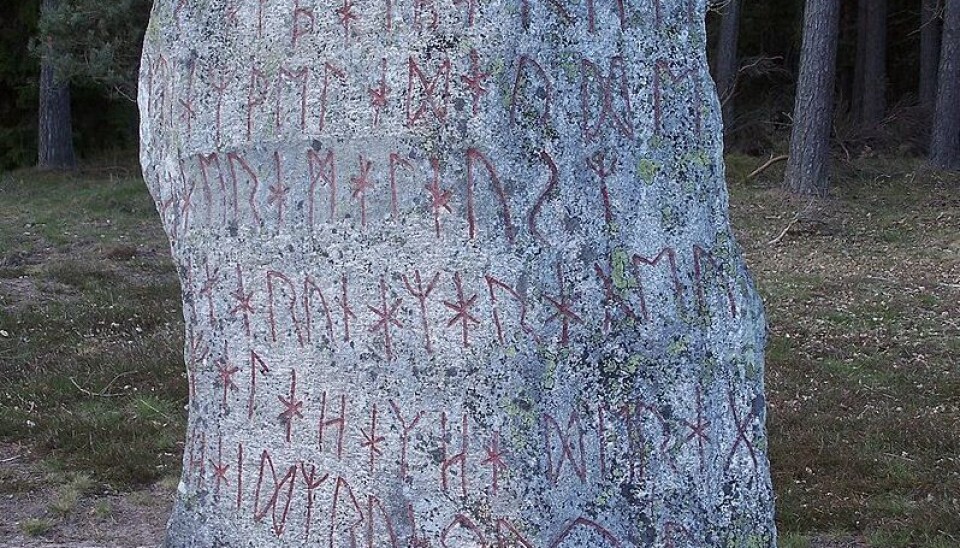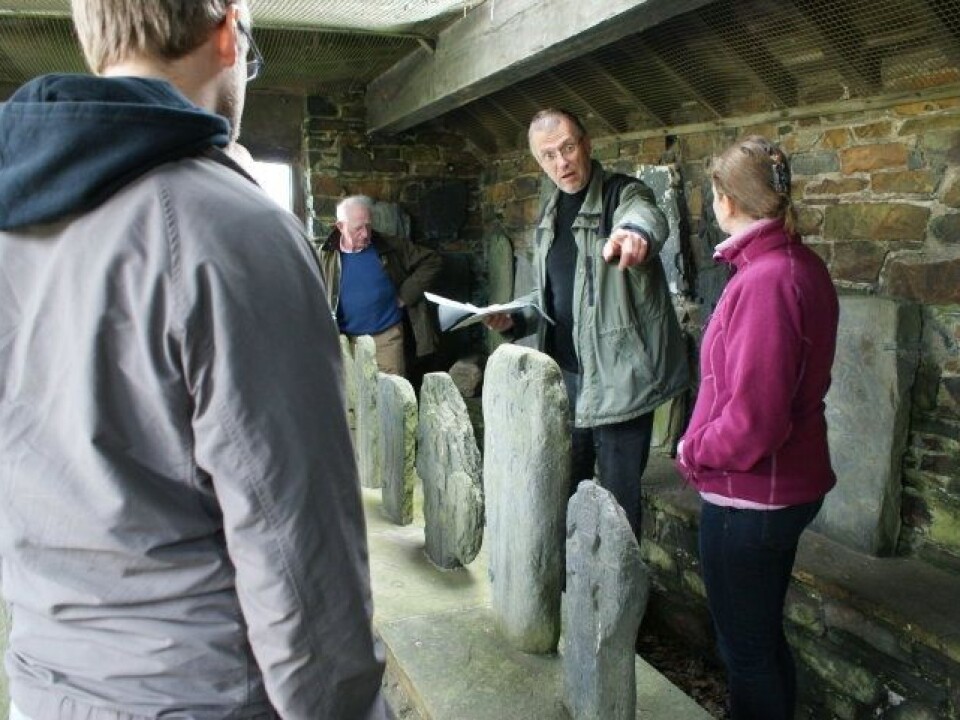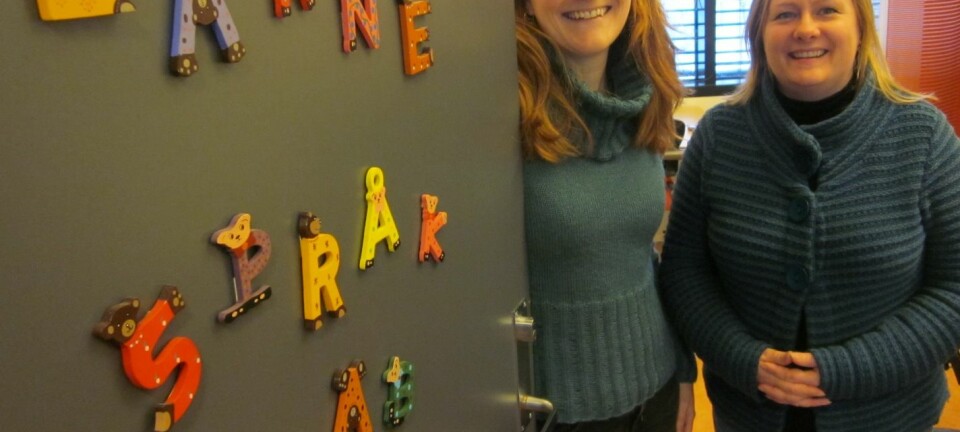
Why did you become a linguist?
What draws people to study little known means of communication, such as Runes and Esperanto? Two linguists trace their intellectual journey to their research interests.
Denne artikkelen er over ti år gammel og kan inneholde utdatert informasjon.
We read it, speak it, think it and interpret it every day of our lives.
"If you talk to a man in a language he understands, that goes to his head. If you talk to him in his language, that goes to his heart," Nelson Mandela has said.
Language is more than words. Where would science be, or our societies for that matter, without language? But not all languages are created equal. Some are more commonly used than others, such as English and Chinese, and some are not used at all, such as Latin.
Yet scholars continue to be intrigued by even the most obscure or impenetrable means of communication between human beings. What follows are conversations with two linguists who have chosen two less conventional languages for their life's work.
Runologist

A death and an American led to Terje Spurkland’s ending up as a runologist at the University of Oslo.
After high school Spurkland studied philology, the science of language and literature.
Spurkland was always a little unclear during his student days about how he was going to make a living from his chosen subject, but he always knew he wanted a job that would enable him to use his language skills.
”Maybe I pursued my interests a little more than was advisable. But in the 1960s many of us studied primarily what we liked. We didn’t think much about future paychecks. None of us really considered the lack of job opportunities upon graduation.”
No Scandinavian experts

Spurkland is now an associate professor at the University of Oslo’s Department of Linguistics and Scandinavian Studies. His specialty is runology, the study of runes and runic inscriptions.
His path to the job was largely incidental.
“The guy with the job in runology died and when his position needed to be filled there were no competent Scandinavian takers,” explains Spurklan.
So the University hired a researcher from the USA.
“The department felt that in a field as national as runology it was a shame that we had no Norwegian experts.”
So the University of Oslo announced an opening for a research position in the field. That job went to Spurkland.
Insufficient research time
His daily job includes teaching about the writing culture in the Middle Ages and he has recently completed a research project on the topic.
“We looked at how European literature was translated to Old Norse in the medieval era,” he explains.
His job as a linguist is pretty much a 50-50 split between teaching and research, and research costs money.
“Once you get the funding you can spend more time on research. Teaching and administration steals too much time. It’s a traditional academic complaint, but it’s true,” he says.
When Spurkland is asked to mention some rudimentary element of wisdom from his field, he points out that you shouldn’t necessarily believe everything you read, including what you find in history books.
Runes and Christianity
“Most general history books or books on the history of literature contend that Norwegians learned to read and write when Christianity was introduced to the country around the year 1000.”
But Spurkland objects to this interpretation, because Norwegians had been writing for 800 years by then, with runes and runic inscriptions.
He adds that it is also wrong to link runes and runic writing solely to paganism and Norse mythology.
Indeed, the Latin alphabet - the letters you are reading now - came hand-in-hand with Christianity, but Christian Norwegians didn’t immediately abandon their runic alphabet.
“It was a dual-alphabet culture, runic and Latin. The two were used simultaneously for 300 years. Runes weren’t phased out until the latter half of the 14th century,” says the runologist.
Phonologist
Jardar Eggesbø Abrahamsen is an associate professor at the Department of Language and Communication Studies of the Norwegian University of Science and Technology (NTNU) in Trondheim.
His interest in language germinated, of all places, in a geography class.
“At high school I had a geography teacher who spoke a little differently than I did, and I found that fascinating.”
The teacher had the same dialect as Abrahamsen, from the southern Møre region on the Mid-Norwegian coast, but with a twist.
“He talked more or less like my grandparents and I started taking notes on the way he expressed himself and found myself analysing his language,” he said.
A language toolbox
Abrahamsen commenced studying Nordic languages. His plan was to become a Norwegian teacher but he soon found out his real interest was in what lay behind the languages.
He shifted his focus to linguistics, which opened a language toolbox. More specifically, he concentrated on phonology, getting his doctorate in the field.
“Phonology is the grammar behind the sounds. It’s what you have in your head that decides what kind of sounds you want to make. It shouldn’t be confused with phonetics, which is how the sounds are heard.”
Tone of voice and eyebrows
The phonologist also has to spread out his workload.
“Teaching goes with the job, so that’s okay. But our work is also disrupted by office work and other interruptions, involving short deadlines, and that means insufficient time for extended research,” he says.
Nevertheless, Abrahamsen has completed several projects and is currently putting the finishing touch on some articles and papers.
These include studies on how inflection relates to eyebrow movements.
“We found a link between the two,” he says.
But he doesn’t want to reveal more until the articles are complete.
His daily work now consists of writing and analysis, but the associate professor says linguists also conduct work in the field.
Esperanto children
“Now and then, research requires me to travel, for instance when I was studying the phenomenon of Esperanto as a mother tongue,” says the phonologist.
Esperanto is a language used in a few Norwegian homes. It was launched in 1887 and had its 125th anniversary last year.
Abrahamsen travelled around Norway visiting people who had grown up in homes where Esperanto was spoken as well as Norwegian.
He says just a few hundred children in the world have grown up with this language in their homes.
Despite such trips, most of his work is indoors in front of his Mac, working on things such as software that can visualise and manipulate tones of speech.
Translated by: Glenn Ostling
































